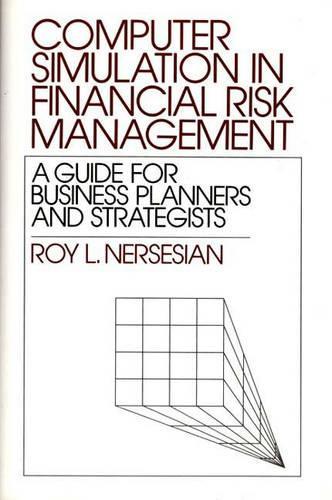
Computer Simulation in Financial Risk Management: A Guide for Business Planners and Strategists
(Hardback)
Publishing Details
Computer Simulation in Financial Risk Management: A Guide for Business Planners and Strategists
By (Author) Roy Nersesian
Bloomsbury Publishing PLC
Praeger Publishers Inc
30th April 1991
United States
Classifications
Tertiary Education
Non Fiction
Business mathematics and systems
3D graphics and modelling
658.15
Physical Properties
Hardback
240
Description
Computer programs that simulate complex processes in the real world can provide a quantitative tool for determining how much debt can be added safely to a company's capital structure. The increasing number of bankruptcies and defaults in today's international business arena result from debt overload and point to major shortcomings in the conventional financial evaluation process. In this book, Roy L. Nersesian describes why current methods of risk management fail and how computer simulation can be employed to determmine the safe level of debt more accurately. Because the decision to add debt to an organization requires favourable, and essentially independent, decisions from both the borrower and lender, it is necesary to quantify both perspectives. Through actual examples readers will learn how to do this and to translate an actual business situation into a simulation model or program. The book presents the concept of simulation in terms that can be understood by generalists in corporations and financial institutions. At the same time, it provides computer programmers with an understanding of risk management principles. It seeks to provide a valuable resource for: financial executives, planners and strategists in corporate and governmental organizations; bank lending officers; and computer programmers working with these organizations.
Author Bio
ROY L. NERSESIAN Chairs the Management Department at the Monmouth College School of Business in West Long Branch, NJ. He is the author of Corporate Planning, Human Behavior, and Computer Simulation (Quorum Books, 1990), and Computer Simulation in Business Decision Making (Quorum Books, 1989).
